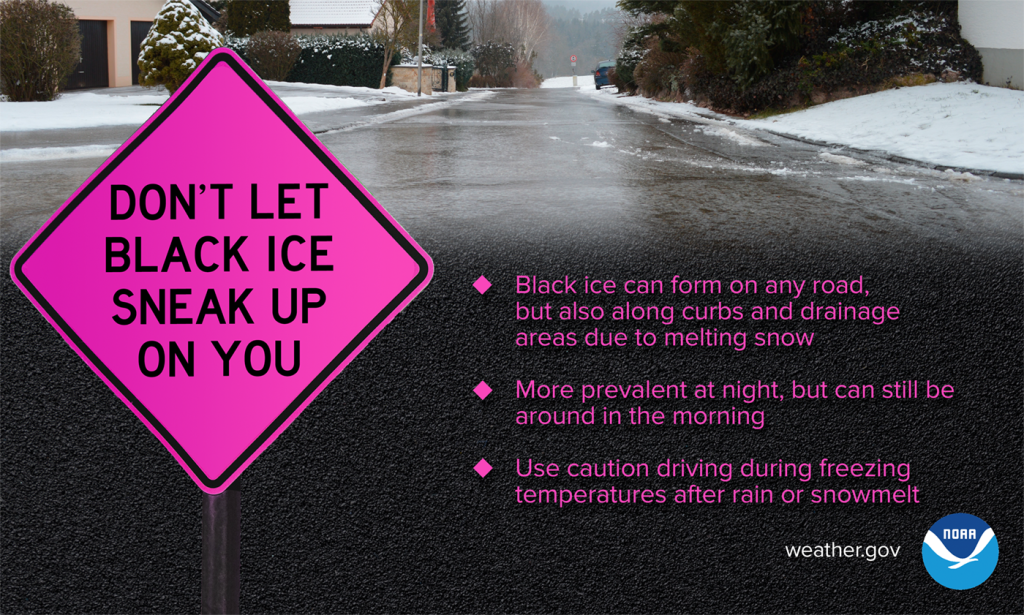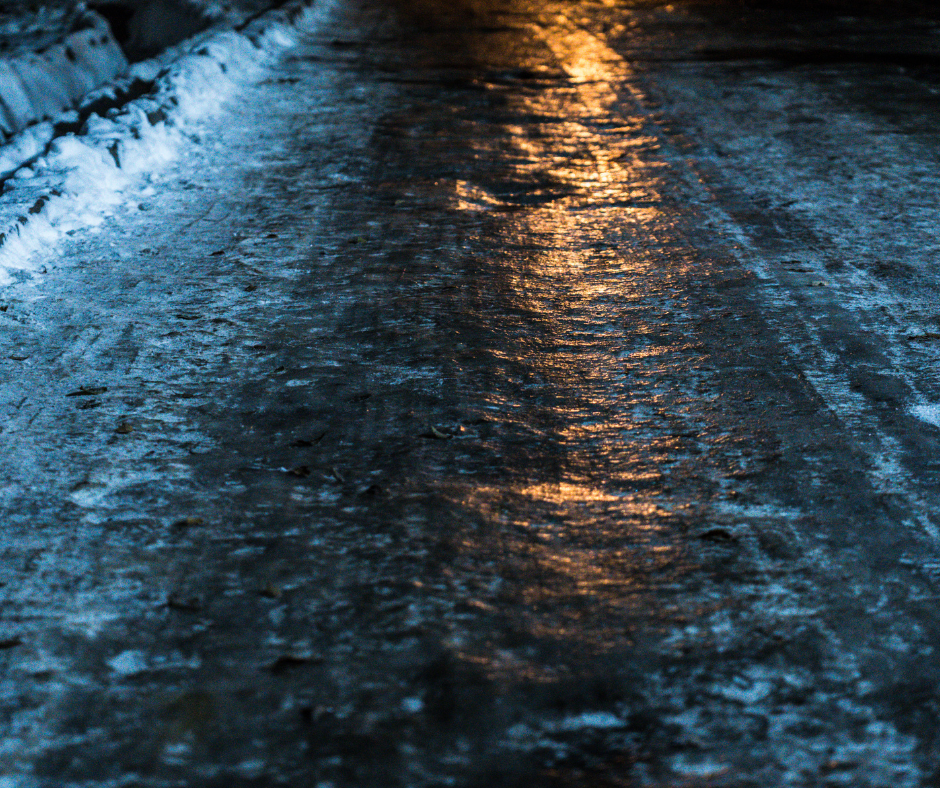Black Ice

What is black ice?
- Despite its nickname, black ice is actually clear.
- It’s often compared to a “glaze” and can form on all kinds of surfaces, especially roads, sidewalks and driveways.
- Since black ice is transparent, it coats and blends into whatever it covers, and that’s part of what makes it so dangerous.
- Black ice is also extremely slippery and has several causes, including freezing rain and the melting and re-freezing of ice and snow.
- It is a potentially deadly driving hazard.

When and where can black ice form?
- It can form on any road, also along curbs and highway center dividers.
- Bridges and overpasses may be more susceptible to icing.
- It forms when recent rain or snowmelt comes into contact with freezing temperatures.
- While black ice is more prevalent at night, it can often stick around for the morning commute.
What can you do to prevent a crash caused by black ice?
- Know what black ice is and when it might form.
- Being aware that what appears to be water may be ice can help you avoid it.
- Slow down – reducing your speed can give you more time to see patches of black ice and avoid them if possible.
- Icy road crashes happen in multiples – if you or someone else crashed because of ice, it’s likely that someone else or you will also crash near the same spot.
Watch this video
It is about freezing rain, which turns the entire roadway into black ice, so everything in it will help you with black ice. Read about a rare case of freezing rain in Utah in 2013 here.
